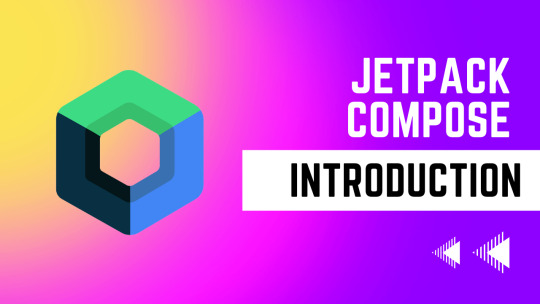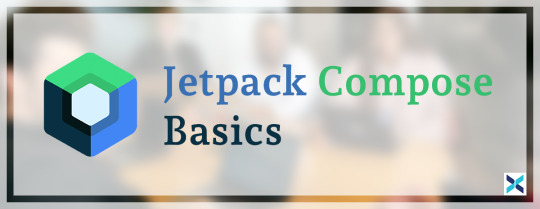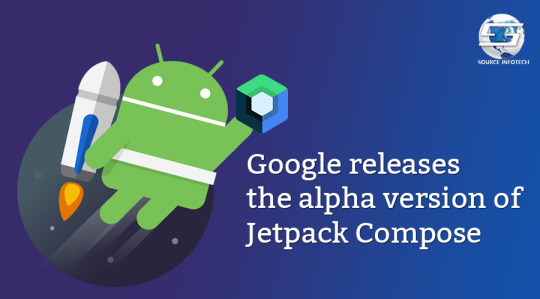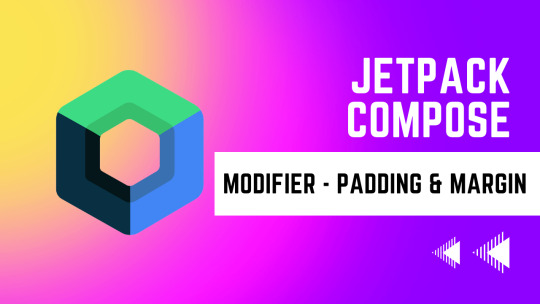#jetpackcompose
Explore tagged Tumblr posts
Text
Database Management Systems: An Overview

Source: NicoElNino from Getty Images
In today’s data-driven world, effective management of data is crucial for businesses and organizations. One of the key components enabling this is Database Management Systems (DBMS). These systems provide a structured way to store, retrieve, and manage data, making it an indispensable tool across various sectors. This article delves into the intricacies of Database Management Systems, exploring their types, functionalities, advantages, and key considerations for implementation.
What are Database Management Systems?
A Database Management System (DBMS) is software that interacts with users, applications, and the database itself to capture and analyze data. It provides a systematic way to create, retrieve, update, and manage data. The primary purpose of a DBMS is to facilitate the efficient organization and manipulation of data, ensuring that it is both accessible and secure.
DBMS can be classified into several categories based on their structure, functionality, and intended use. The most common types include:
1. Hierarchical Database Management Systems
This type organizes data in a tree-like structure, where each record has a single parent. Hierarchical DBMSs were among the first types of databases developed and are primarily used in applications where relationships are strictly hierarchical. While they are efficient for certain applications, their rigidity makes them less suitable for complex data relationships.
2. Network Database Management Systems
Similar to hierarchical DBMSs, network DBMSs allow more complex relationships through a graph structure. Each record can have multiple parent and child records, making it more flexible than hierarchical systems. However, the complexity of these relationships can also make them challenging to manage.
3. Relational Database Management Systems

Relational DBMS (RDBMS) is the most widely used type of database management system. It organizes data into tables (or relations), which can be linked by common fields. This model allows for easier data manipulation and retrieval using Structured Query Language (SQL). RDBMSs, like MySQL, Oracle, and Microsoft SQL Server, are widely adopted in various industries due to their flexibility and powerful querying capabilities.
4. Object-oriented Database Management Systems
These systems store data in the form of objects, as used in object-oriented programming. Object-oriented DBMSs are ideal for applications requiring complex data representation, such as multimedia databases or CAD applications. They provide better performance for specific use cases, but their adoption is still limited compared to relational databases.
5. NoSQL Database Management Systems
NoSQL databases have gained popularity due to the rise of big data and the need for real-time data processing. Unlike traditional RDBMSs, NoSQL databases can store unstructured or semi-structured data, allowing for greater scalability and flexibility. Examples include MongoDB, Cassandra, and Redis. These systems are particularly useful for applications dealing with large volumes of diverse data.
Key Features of Database Management Systems
Database Management Systems come with several core functionalities that enhance data management:
Data Storage and Retrieval: DBMSs efficiently store large amounts of data, allowing for quick retrieval based on user queries.
Data Security: With features like user authentication and authorization, DBMSs help protect sensitive data from unauthorized access.
Data Integrity: DBMSs enforce rules and constraints to maintain the accuracy and consistency of data.
Concurrency Control: In multi-user environments, DBMSs manage simultaneous data access to prevent conflicts and ensure data integrity.
Backup and Recovery: Most DBMSs provide tools for data backup and recovery, safeguarding against data loss.
Advantages of Database Management Systems
https://visionarycios.com/wp-content/uploads/2024/11/3.2.-Advantages-of-Database-Management-Systems-Source-arturszczybylo.jpg
Improved Data Sharing: DBMSs enable multiple users and applications to access and share data efficiently, promoting collaboration and data-driven decision-making.
Data Consistency: By centralizing data storage, DBMSs help maintain consistency across various applications, reducing redundancy and discrepancies.
Enhanced Data Security: With built-in security measures, DBMSs protect sensitive information and ensure compliance with data protection regulations.
Scalability: As organizations grow, DBMSs can scale to accommodate increasing data volumes without compromising performance.
Advanced Data Analysis: With powerful querying capabilities, DBMSs facilitate data analysis, allowing organizations to derive insights and make informed decisions.
Challenges of Database Management Systems
Despite their advantages, implementing a Database Management System can present challenges:
Cost: The initial setup and ongoing maintenance of a DBMS can be expensive, especially for small businesses.
Complexity: Configuring and managing a DBMS requires specialized knowledge and skills, which may necessitate hiring additional personnel or training existing staff.
Performance Issues: As databases grow, performance can become an issue, necessitating optimization and tuning.
Data Migration: Transitioning from an existing system to a new DBMS can be complex and time-consuming, requiring careful planning and execution.
Considerations for Choosing a Database Management System
https://visionarycios.com/wp-content/uploads/2024/11/3.2.-Considerations-for-Choosing-a-Database-Management-System-Source-ukidphumsirichat.jpg
Data Structure: Assess the type and structure of data being managed. RDBMSs may be ideal for structured data, while NoSQL systems may be better for unstructured data.
Scalability Requirements: Evaluate current and future data growth to ensure the chosen DBMS can scale accordingly.
User Base: Consider the number of users who will access the database and the level of concurrency required.
Budget: Determine the budget for both initial setup and ongoing maintenance, including hardware, software, and personnel costs.
Vendor Support: Look for DBMS vendors that offer reliable support and resources to assist with implementation and troubleshooting.
Conclusion
Database Management Systems are crucial in managing and organizing data effectively. Their ability to streamline data access, enhance security, and provide powerful analytical capabilities makes them indispensable for businesses in today’s digital age. By understanding the different types of DBMS, their features, advantages, and challenges, organizations can make informed decisions when selecting and implementing the right database management solution for their needs. Whether through a relational, NoSQL, or other types of DBMS, leveraging the right database management strategy can significantly impact an organization’s success in managing its data assets.
In conclusion, Database Management Systems are not just tools; they are strategic assets that can drive efficiency and innovation within an organization. As data continues to proliferate, the importance of robust DBMS solutions will only grow, solidifying their role in the future of data management.
#database#codingbootcamp#python#api#selenium#mariadb#qspiders#jspiders#coding#pyspiders#cplusplusprogramming#datastructuresandalgorithms#databasemanagement#java#jetpackcompose#data#html#assignment
0 notes
Text
Jetpack Compose
(disclaimer: I'm learning about this for the first time and my explanations are aimed at beginners and to be taken with a grain of salt. Tbh I'm mostly writing the notes for myself!)
It's a declarative UI framework. What does that mean? Let's say you're trying to make a cake. The opposite approach, imperative programming would be like a recipe - mix all the ingredients, pour in a pan, and bake at a certain temperature for a certain number of minutes. Most programming languages use this approach. The declarative programming approach specifies what kind of cake you're making: it says "make a circular cake with 54 sprinkles, blue frosting." You see this programming paradigm with HTML also - it simply specifies what components are to be displayed instead of how to construct them step by step.
Composition: UI elements are coded in "Composables" which can be nested inside of each other. It's kind of like a boxes in other boxes. Think of a text messaging interface: in the messaging screen, there's a bunch of text bubbles, and in each text bubble, there's some text. In this case, the screen, the bubbles, and the text strings are like our boxes and can be composed inside of each other.
Recomposition: if our Composable needs to be changed, it simply recomputes the element rather than updating the same instance. This keeps with the declarative paradigm and is more efficient than other approaches. There's much more nuance to be said about this, but since this is a beginner lesson, I'll leave it at that.
0 notes
Text

🌟 Discover the Future of Android Development with Jetpack Compose! 🌟
Are you ready to transform your Android app development experience? Meet Jetpack Compose—a revolutionary toolkit that’s changing the game for UI design on Android.
🚀 What Makes Jetpack Compose a Game-Changer? Jetpack Compose simplifies the way you build beautiful and responsive UIs. With its declarative syntax, you can write clear, concise code that makes UI development faster and more intuitive. Forget about XML layouts and embrace a modern, Kotlin-based approach!
✨ Why You’ll Love It:
Declarative Syntax: Streamline your code and improve readability.
Composable Functions: Easily create and reuse UI components.
Live Previews: See real-time updates and make adjustments on the fly.
Seamless Integration: Works effortlessly with your existing Android projects.
📹 Get Started Now! Check out this amazing tutorial video to see Jetpack Compose in action and learn how you can leverage it to create stunning apps. Whether you’re new to Android development or looking to upgrade your skills, this is the perfect starting point!
🔗 Explore More: Dive into Jetpack Compose and revolutionize your app development process.
Happy coding! 🚀✨
#android#android developers#android development#coding#flutter app development#flutter#hybrid app#hybrid app development#hybrid application development#ios app development#JetpackCompose#AndroidDevelopment#AppDevelopment#Kotlin#UIDesign#TechTutorial#AndroidStudio#Programming#MobileAppDevelopment#CodeNewbie#TechTips#DeveloperTools#AndroidApps#SoftwareEngineering#TechEducation
1 note
·
View note
Text

Compose Boltuix App Template - Jetpack Compose 2025 UI Kit #jetpackcompose #androiddevelopment #app #templates #kotlin #appdevelopment
Try NOW https://play.google.com/store/apps/details?id=com.boltuix.composetemplate
#kotlin#androiddeveloper#materialdesign#uiux#androiddev#materialuix#appdevelopment#appdesign#compose#jetpack compose
0 notes
Text
Time for more #JetpackCompose today! I've never had so much fun with Android before! ❤️
1 note
·
View note
Text
Jetpack Compose Basics

What is Jetpack Compose?
Jetpack Compose is a modern toolkit for building a Native UI in Android. It simplifies and makes easy UI development on Android. Compose is a powerful tool for building native UI and Jetpack Compose uses the Kotlin APIs. You can create a UI very easily and quickly.
Why Jetpack Compose?
Concise and Idiomatic Kotlin
Built with the benefits that Kotlin brings
Declarative
Fully declarative for defining UI components
Compatible
Compatible with existing views
Enable Beautiful Apps
Designed with Material Design
100% Kotlin
written in Kotlin programming language
Accelerate Development
writing less code and using tools
One codebase
No need to write XML anymore.
Less code
With less code, you can achieve more.
Composable Function
In Jetpack Compose, Composable functions are used for defining all the UI elements of your app programmatically. So, you need not create an XML file for your app screen design. You just need to make a composable function just by using the @Composable annotation to the function name. The basic syntax of a Composable function is as below:-
@Composable fun UiComponent() { // Written code for your UI element }
UI Layouts
Continue Reading: Jetpack Compose
#jetpack compose#android app development#development#Android#jetpackcompose#androiddev#ui#moderntoolkit#googleandroid#developer#programmer#expertappdevs#ead#app
0 notes
Photo

Android Jetpack is the UI toolkit that helps to speed up native app development. The alpha version of Jetpack Compose combines a low-code approach, an intuitive language, and a reactive programming model. This would help developers to build high-quality apps at scale.
If you're looking to build an Android app for your business, contact our expert team. Visit us at https://bit.ly/3b13yMx
0 notes
Link
Want to develop a RadioButton app with Jetpack compose? Hire Android developer from a well-known mobile app development company. Read more
0 notes
Photo

Build a wellness app with us using State in #JetpackCompose! Your app's state determines what is displayed in the UI, how to optimize the structure of your composable functions, and more. Watch the #GoogleIO session → https://t.co/Y8k2hA55ca https://t.co/lzgbjV9StB
0 notes
Photo

Jetpack Joyride 2 MOD APK (Unlimited Money/ Ads free)Click Here:https://whatsgrip.com/jetpack-joyride-2-mod-apk/ #jetpack #JetpackCompose #Jets #Jethro #Jett #jetpacks #jetsetradiofuture #blogger #mod #apk #whatsgrip #joyride #game #gamergirl #gamer
0 notes
Text
📱✨ Jetpack Compose Tips: Margin and Padding Explained! ✨📱

Hey Tumblr community! If you're diving into Jetpack Compose and need some clarity on handling margin and padding, I’ve got something special for you. Our latest YouTube tutorial covers everything you need to know to master spacing in your UI designs.
What’s Inside the Tutorial:
Understanding Padding: Learn how to effectively use padding to manage the internal spacing within your composables.
Spacing Alternatives: Explore techniques to simulate margin and manage the space between composables using spacers and layout parameters.
Hands-On Examples: See practical applications and examples to help you apply these concepts in your projects.
🎥 Check Out the Full Tutorial Here: https://www.youtube.com/watch?v=AQgVB2x9J5k
This guide is perfect for both beginners and seasoned developers looking to polish their Jetpack Compose skills. Dive in and let me know your thoughts or questions!
#JetpackCompose #AndroidDev #UIUX #ProgrammingTips #SoftwareDevelopment #YouTubeTutorial #MobileDev
0 notes
Photo

Jetpack compose Web to app templates: https://www.boltuix.com/2022/08/android-webview-to-app-template-with.html #jetpackcompose #android #business #uiux #template #kotlin #kotlindeveloper #paid #purchase #app #AppBuilder #webview #webtoapp https://www.instagram.com/p/Chw1QBJveMF/?igshid=NGJjMDIxMWI=
#jetpackcompose#android#business#uiux#template#kotlin#kotlindeveloper#paid#purchase#app#appbuilder#webview#webtoapp
1 note
·
View note
Photo

Compose Multiplatform shares a common (platform-independent) part including the API with #JetpackCompose, a modern reactive UI toolkit for Android created by @AndroidDev, extending it with APIs specific for other platforms.
0 notes
Photo

We LOVE #JetpackCompose, but what do you do when the library's magic isn’t performing like you want? We covered Modern Android Development best practices, common mistakes, and how to avoid them at #GoogleIO → https://t.co/hKvwQ0SACd https://t.co/1evWIfYxim
0 notes